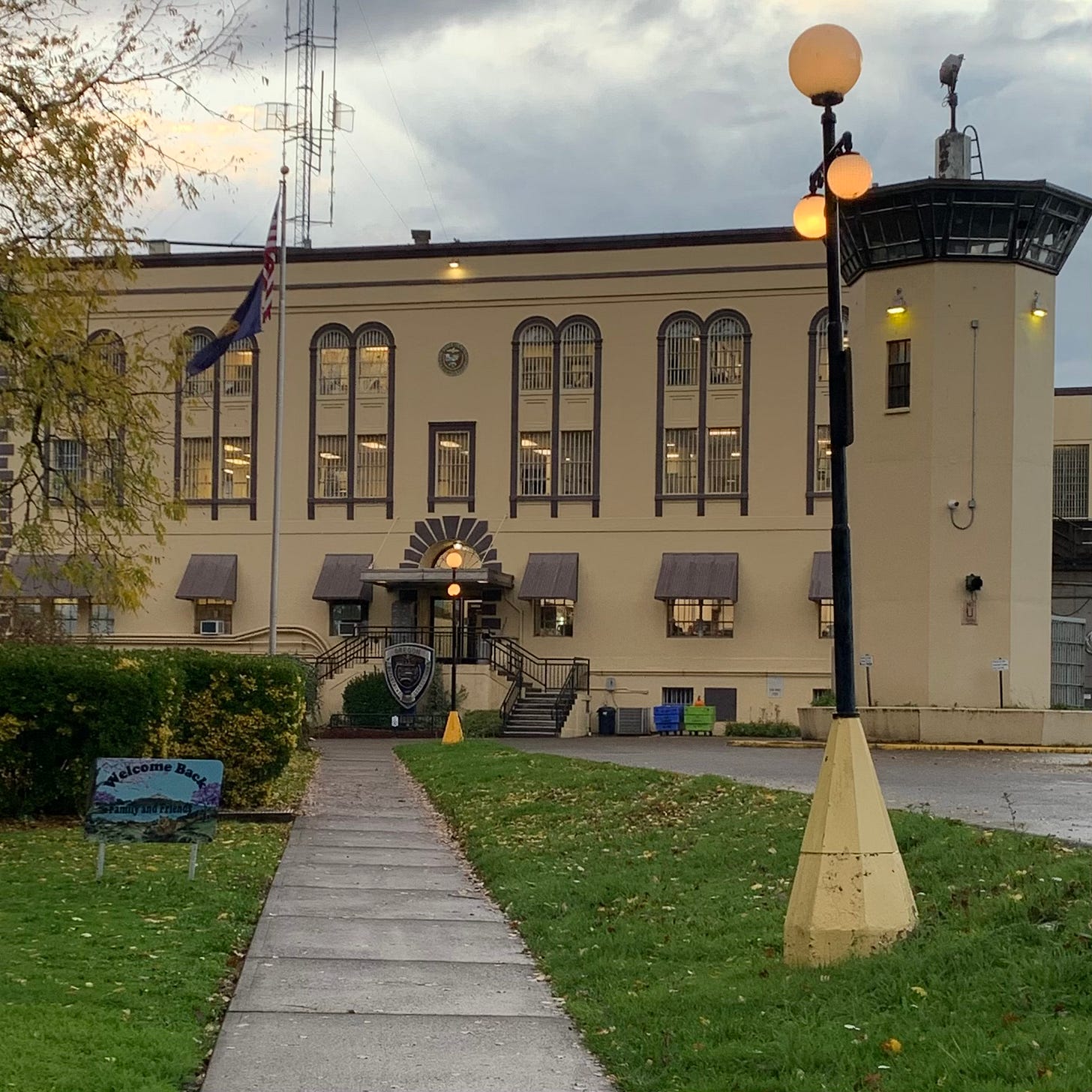Gardens delineated by pathways cue the eye: Here, look here, this is what we are growing. From designing the botanical garden to the humble cottage garden, the gardener relies on constructed tricks to assert human control over land. Think raised beds and compost. We clip and prune, we select specimens, sow and weed with the intention of asserting our will over nature. And sure enough, the boundaries can hold the line for a while — maybe even a season, but migration is the law of land and sea. Moss. Dandelions. Sly squirrels disrupt our intentions. The structure of the garden tells us a little something about how the gardener views the world.
Oregon State Penitentiary’s 25-ft wall creates a 22-acre perimeter, and inside that wall there are gardens, alongside concrete, chain-link fences. The men see the guard tower. They see the weight pile. And they also see the ducks that migrate to the pond in the Memorial Healing Garden. They hear wild geese overhead. And if they are on the fifth floor, they can look out a window in the Chaplain’s office to see over the wall. This week we have collected writing that questions how razor wire fences dare to keep trees out; we read how concrete walls attempt to hold growth in stasis; and we learn how critical time in nature is to the grieving soul. We begin with Imprisoned Nature by WC Puppy, who writes from Eastern Oregon Correctional Institution:
Even stone will one day crack
Concrete splits and bars leave gaps
Dust will blow and fly on wind
Settle down to earth again.
Like WC Puppy, Growing in Concrete by Sarah Tonin exalts the power of nature (the divine!) to shift the earth below concrete, sending up tender shoots of hope:
Tell me what you notice in absence of trees and grass.”
I slump my shoulder and let out a sigh,
“Nothing but concrete and barbwire,” I say, “It’s kinda obvious. Why?”
“You’re not looking close enough,” he says, “take your time and look once more.
You can find the beauty in everything if you just let your mind explore.
In Enjoy Nature’s Embrace, Melissa Black writes: “Nature is a small, fenced perimeter for me.” The razor wire contains her body, but her eyes reach for the trees, and her imagination holds tight to the liberation of breathing in the world.
From Snake River Correctional Institution in Ontario, Oregon, Shane Espinoza writes about how some incarcerated folks experience grief — the loss of freedom and contact with family and friends, to the very poignant grief of losing a family member. PonyXpress editor, Scott Bitter (who by the way runs on the track, logging five miles a day) writes: “You make very persuasive arguments about the benefits of being outdoors in prison. Thank you for researching written sources and sharing your insights. In prison, we experience acute grief cycles during extended separation. I envision newcomers reading this on Edovo and learning from your experience.” Shane attributes time spent on the yard, as counteraction to the physical degradation that follows bouts of stress and grief. This morning, he will walk out onto the snowy yard look out on the horizon. | TDS



Thank you for this.